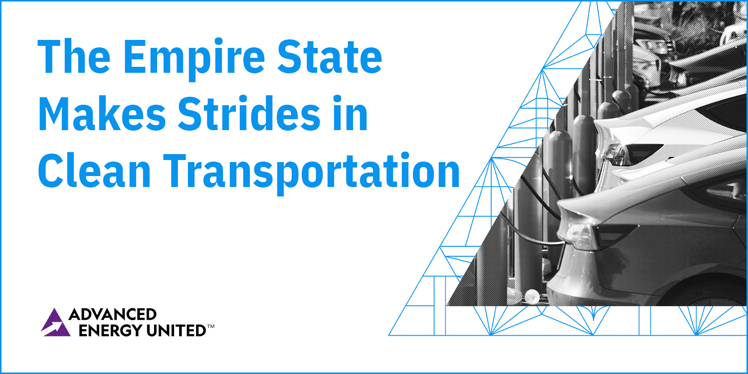
November was quietly one of the most consequential months for transportation policy in New York’s history, and it’s worth looking back on everything that happened in its totality—especially given New York’s leadership role on all things clean energy, and how transforming the transportation sector may be the state’s biggest challenge in hitting its clean energy goals.
New York state agencies and utility regulators took key steps to deploy more electric vehicle (EV) charging infrastructure more quickly, finalized the path toward eliminating emissions from the sector, and launched new incentive programs.
Notable points of progress include:
- On November 16, the New York Public Service Commission (PSC) issued an order in the Make Ready Mid-Point Review proceeding, addressing make-ready infrastructure for light-duty vehicles. The program, which helps cover the costs of connecting new public EV charging station projects to the grid, was expanded by a half billion dollars to $1.2 billion overall and substantially increased the statewide targets for charging stations. The PSC’s decision makes key improvements to the funding levels based on the program’s real-world usage and updated charging needs forecasts and expands the investment in underserved communities across the state. It also more than doubles the budget and expands equipment eligibility for commercial vehicle charging to $58 million to help fleets of larger vehicles electrify.
- On November 20, the PSC issued another order in the proceeding on demand charge alternatives. Demand charges are usage-based fees that are assessed based on a utility customer’s greatest usage within a billing period. For EV charging stations with low utilization but which dispense large amounts of power to charge vehicles quickly, this can erode the financial viability of these important pieces of infrastructure. The order creates a short-term fix to reimburse station operators while instituting a longer-term fix that gradually phases in these charges as the charging stations serve more and more vehicles. These fixes will ensure EV charging station operators can continue operating profitably while EV adoption grows.
- Elsewhere, the New York Department of Environmental Conservation (DEC) finalized its regulations on the Advanced Clean Cars II rulemaking and adopted the Heavy-Duty Omnibus and Phase 2 Greenhouse Gas (GHG) emissions standards for medium- and heavy-duty vehicles. Collectively, these rules require automakers to sell an increasing percentage of zero-emission vehicles each year and set stronger limits and testing procedures for smog- and soot-forming pollution from heavy-duty vehicles.
- The New York State Energy Research and Development Authority (NYSERDA) and DEC jointly released guidelines and program details for a new $500 million program for electric school buses and associated infrastructure for transporting students. This program is funded through a bond approved by voters last year. New York has the nation’s most ambitious school bus electrification program which will take schoolchildren off polluting diesel buses by 2035.
- In another process created by New York Governor Kathy Hochul earlier this year to address barriers to the electrification of medium- and heavy-duty commercial vehicles, the PSC conducted several workshops in November exploring innovative solutions to improving utility forecasting and process improvements to ensure New York’s grid and infrastructure are ready to meet the needs of these fleets, owned and operated by small businesses, transit services, and others.
- The New York Department of Transportation (NYDOT) and the New York Power Authority (NYPA) announced they are working on a solicitation for deploying more fast charging stations for EVs in New York, using funding allocations from the federal Infrastructure Investment and Jobs Act.
All of these important developments were a result of laws enacted by the New York legislature and Governor Hochul over the last several years. United’s continued commitment to ensure these programs accelerate the clean energy transition effectively speaks to our unique approach to advocacy, wherein the passage of a bill is the starting line, not the finish line.
Collectively, these actions demonstrate New York’s leadership on the transition to zero emission vehicles and will ensure New York residents will be among the first to enjoy the benefits of high tech, clean transportation. We’re beyond excited to continue supporting New York’s transition to a fully zero emissions transportation system and applaud the public servants working on these important initiatives in New York state government.